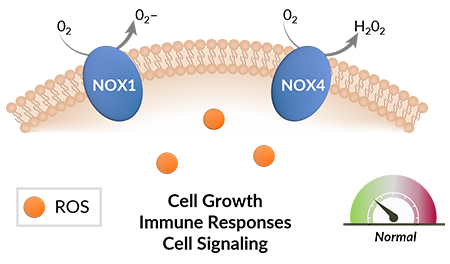
NOX Enzyme Inhibitors: A Novel Mechanism Broadly Applicable for Tackling Fibrosis
Fibrosis is a pathological feature of most chronic inflammatory diseases across multiple organ systems We are primarily targeting fibrosis in rare diseases, but anti-fibrotic NOX inhibition applicability is far broader.
Fibrotic Disorders contribute to an estimated 45% of all-cause mortality in the United States

NOX1 and NOX4 are Important Targets for Treating Fibrotic Diseases
NOX1 and NOX4 are enzymes that produce reactive oxygen species (ROS), which play a crucial role in the development of fibrotic diseases by contributing to oxidative stress, inflammation, and tissue remodeling. These enzymes are implicated in the activation of fibroblasts and the synthesis of extracellular matrix proteins, leading to tissue scarring. Consequently, targeting NOX1 and NOX4 offers a focused therapeutic strategy for fibrotic diseases, potentially slowing their progression with fewer side effects compared to broader antioxidant treatments.

